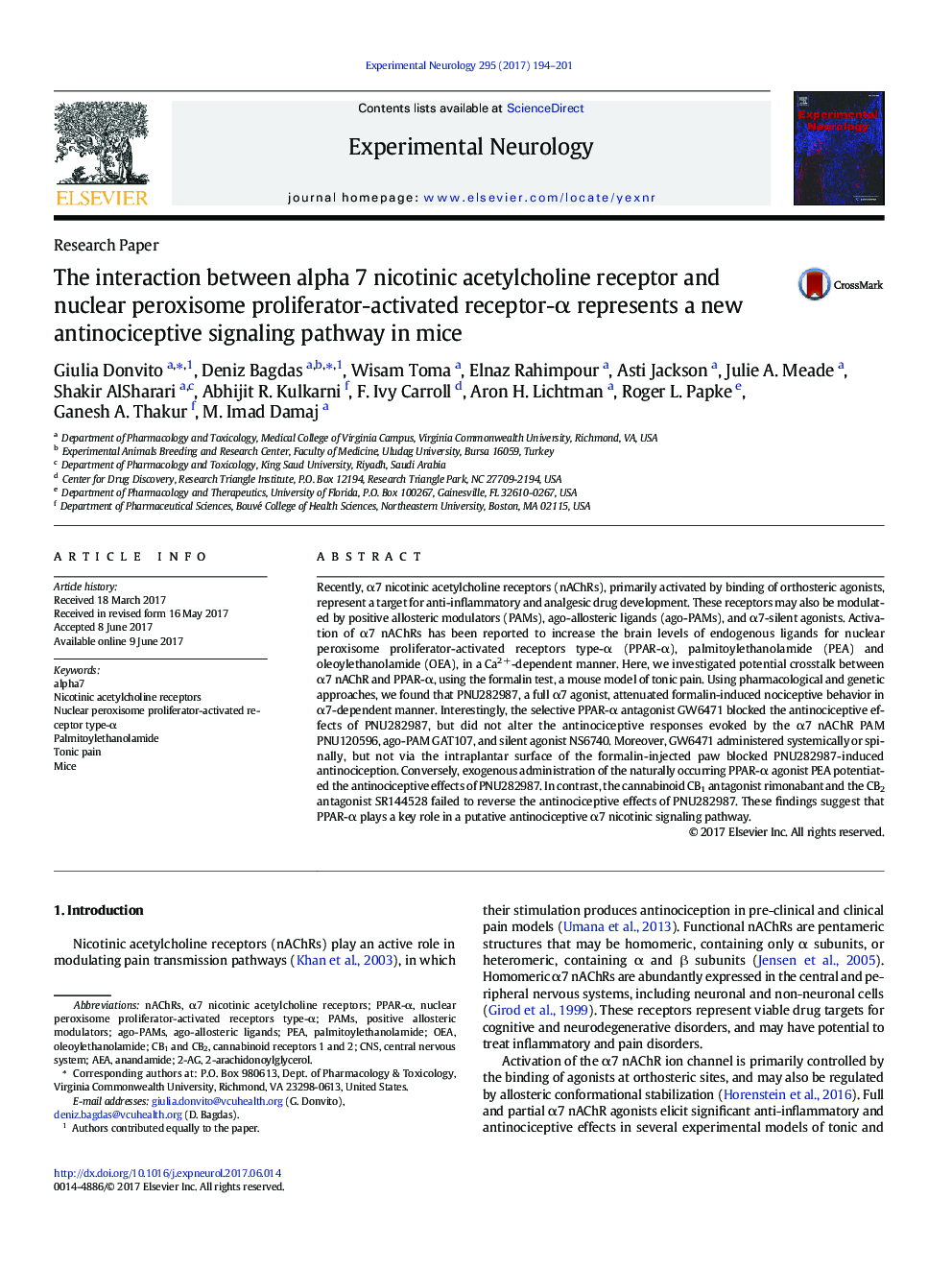| کد مقاله | کد نشریه | سال انتشار | مقاله انگلیسی | نسخه تمام متن |
|---|---|---|---|---|
| 5629118 | 1580144 | 2017 | 8 صفحه PDF | دانلود رایگان |

- The α7 nAChR and PPAR-α crosstalk is investigated using a mouse model of tonic pain.
- The PPAR-α antagonist blocks the antinociceptive effects of α7 nAChR full agonist.
- The cannabinoid receptors are not involved in the effects of α7 nAChR full agonist.
- Palmitoylethanolamide potentiates the antinociceptive effects of α7 nAChR full agonist.
- PPAR-α plays a key role in a putative antinociceptive α7 nicotinic signaling pathway.
Recently, α7 nicotinic acetylcholine receptors (nAChRs), primarily activated by binding of orthosteric agonists, represent a target for anti-inflammatory and analgesic drug development. These receptors may also be modulated by positive allosteric modulators (PAMs), ago-allosteric ligands (ago-PAMs), and α7-silent agonists. Activation of α7 nAChRs has been reported to increase the brain levels of endogenous ligands for nuclear peroxisome proliferator-activated receptors type-α (PPAR-α), palmitoylethanolamide (PEA) and oleoylethanolamide (OEA), in a Ca2 +-dependent manner. Here, we investigated potential crosstalk between α7 nAChR and PPAR-α, using the formalin test, a mouse model of tonic pain. Using pharmacological and genetic approaches, we found that PNU282987, a full α7 agonist, attenuated formalin-induced nociceptive behavior in α7-dependent manner. Interestingly, the selective PPAR-α antagonist GW6471 blocked the antinociceptive effects of PNU282987, but did not alter the antinociceptive responses evoked by the α7 nAChR PAM PNU120596, ago-PAM GAT107, and silent agonist NS6740. Moreover, GW6471 administered systemically or spinally, but not via the intraplantar surface of the formalin-injected paw blocked PNU282987-induced antinociception. Conversely, exogenous administration of the naturally occurring PPAR-α agonist PEA potentiated the antinociceptive effects of PNU282987. In contrast, the cannabinoid CB1 antagonist rimonabant and the CB2 antagonist SR144528 failed to reverse the antinociceptive effects of PNU282987. These findings suggest that PPAR-α plays a key role in a putative antinociceptive α7 nicotinic signaling pathway.
49
Journal: Experimental Neurology - Volume 295, September 2017, Pages 194-201